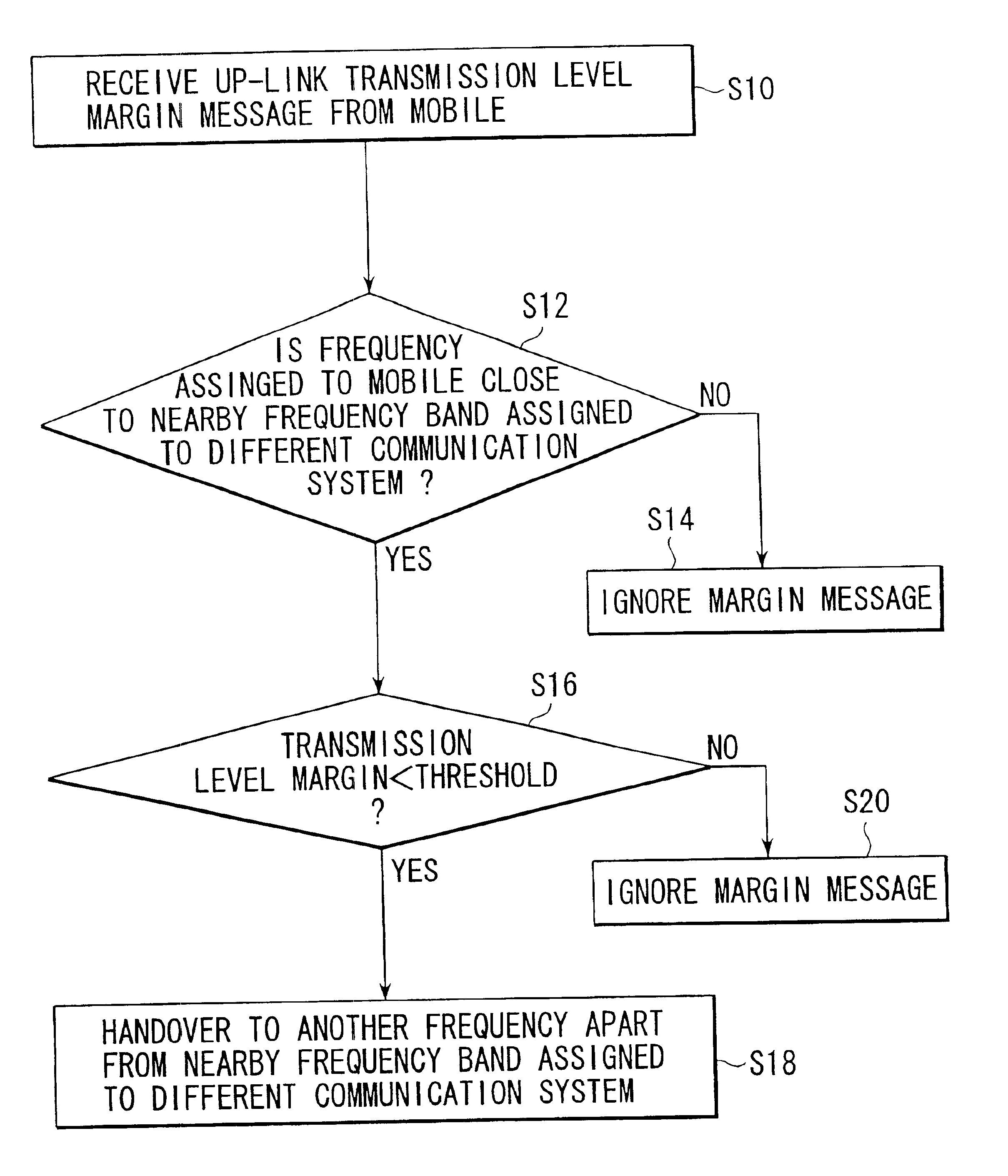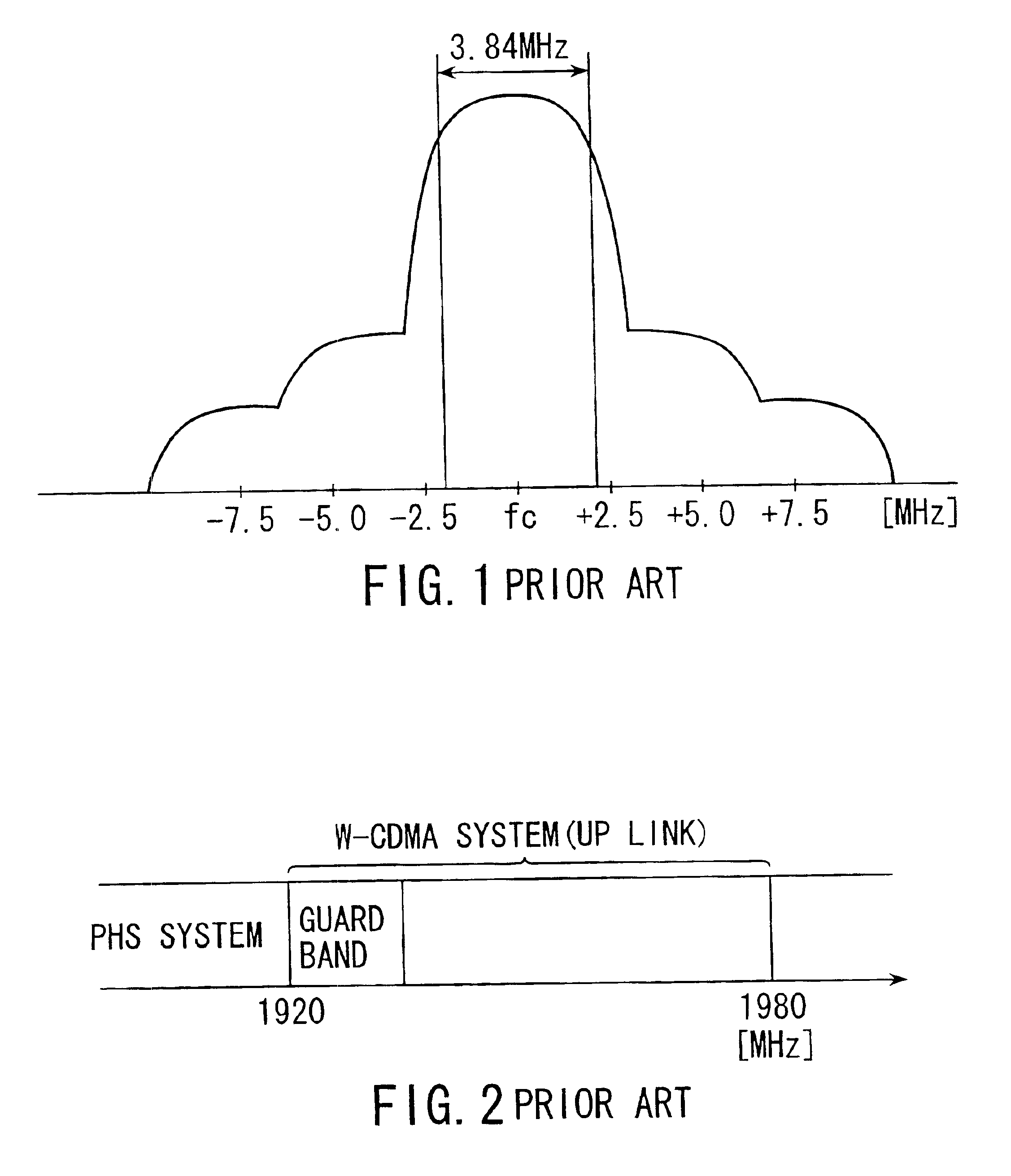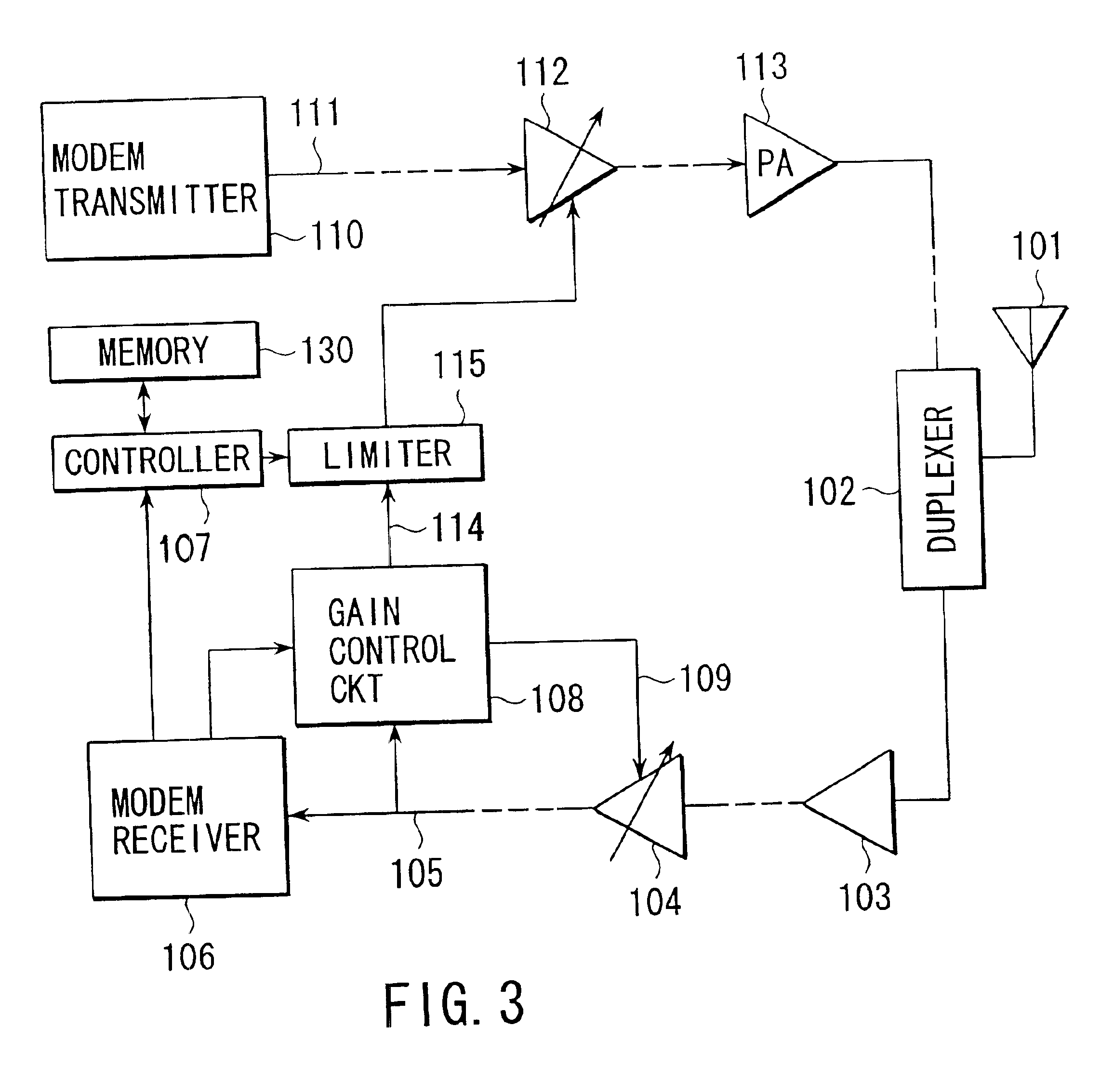Systems and methods for controlling transmission power to reduce frequency interference
a transmission power and frequency interference technology, applied in the field of wideband radiocommunication system, can solve problems such as adversely affecting the operation of the phs system
- Summary
- Abstract
- Description
- Claims
- Application Information
AI Technical Summary
Benefits of technology
Problems solved by technology
Method used
Image
Examples
first embodiment
[0025]Referring now to FIG. 3, there is illustrated in block diagram form a radiocommunication device (hereinafter referred to as a mobile) according to the present invention.
[0026]A radio-frequency signal (down-link signal) transmitted from a base station (not shown) is received by an antenna 101 and then input through a duplexer 102 to a low-noise amplifier 103. An output signal of the amplifier 103, after, though not shown, passing through a filter for eliminating undesired signals outside the desired frequency band, a down-converter for frequency converting the received RF signal to an intermediate-frequency signal, and a filter for eliminating undesired signals apart in frequency from a desired signal, is applied to a gain controlled amplifier 104 where the output signal of the amplifier 103 is subjected to level adjustment. The level-adjusted signal is then converted into a baseband signal 105 by passing through a quadrature demodulator, a baseband filter, and a baseband ampli...
third embodiment
[0060]Additional advantages and modifications will readily occur to those skilled in the art. Therefore, the present invention in its broader aspects is not limited to the specific details, representative devices, and illustrated examples shown and described herein. Accordingly, various modifications may be made without departing from the spirit or scope of the general inventive concept as defined by the appended claims and their equivalents. For example, the example of the radiocommunication systems is not limited to the above example. Further, the third embodiment includes two judgment steps S16 and S46 in FIG. 9 and steps S36 and S56 in FIG. 10. It is possible to set the threshold in these two steps to different values in order to have a hysteresis characteristics. If these thresholds are set to the different values, it is desirable to make the threshold for margin of step S16 greater than that of step S42 and make the threshold for level of step S36 lower than that of step S52 i...
PUM
 Login to View More
Login to View More Abstract
Description
Claims
Application Information
 Login to View More
Login to View More - R&D
- Intellectual Property
- Life Sciences
- Materials
- Tech Scout
- Unparalleled Data Quality
- Higher Quality Content
- 60% Fewer Hallucinations
Browse by: Latest US Patents, China's latest patents, Technical Efficacy Thesaurus, Application Domain, Technology Topic, Popular Technical Reports.
© 2025 PatSnap. All rights reserved.Legal|Privacy policy|Modern Slavery Act Transparency Statement|Sitemap|About US| Contact US: help@patsnap.com



